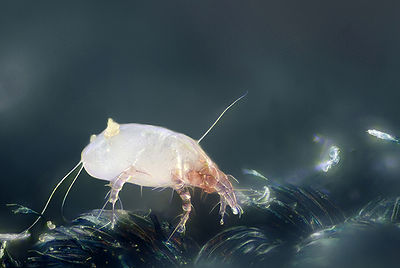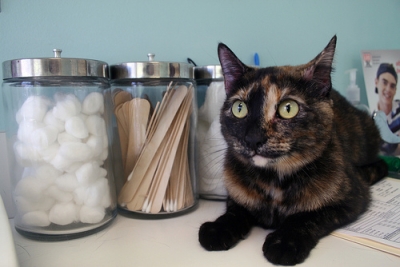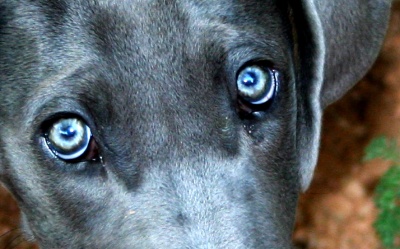
Dust mites, micrscopic insects, have no season. They are with us all year, every year. They affect humans as well as pets. Dust mites feed on dead skin, viruses, bacteria and fungi. The dead skin of allergic mammals is particularly tasty to them.
Dust mites have translucent bodies. They live in carpeting, upholstery, bedding, clothing, mattresses, cloth toys. They like warm, moist areas.
Symptoms in cats can be chin acne, plasma cell pododermatitis, eosinophilic granulomas, inflammation and/or infections of the ear. Dogs can have bacterial skin inflammations and/or infections especially on the face and feet, ear inflammation/infection, red, itchy rashes.
A vet examination can determine if the problem is due to dust mite allergies. Treatment involves regular(weekly if your pet responds well) soothing baths with hypoallergenic shampoos such as Anti-Allergen Pet Shampoo. Your vet may recommend topical ointments or sprays and antihistamines.
You can try to control dust mites naturally by following a simple routine.
- Wash pets bedding at least once a week in hot water using a hypoallergenic clothes wash.
- If possible, remove rugs. Instead of carpeting choose wood, tile or vinyl flooring. If you have carpeting, steam clean at regular intervals and try to keep pets out of those rooms. Vacuum frequently.
- Leather or vinyl furniture keeps dust mite population down or vacuum often. There are “dust mite” covers available for allergy sufferers.
- Dust furniture daily with a damp cloth.
- Keep pets out of the room you are cleaning.
- Wipe pets’ faces and feet with a damp cloth daily.
- Brush your pets daily.
- Avoid cloth toys. Opt instead for those made of hard plastic or rubber.
- Use an air purifier to cut down mite population.
Following a regular cleaning routine will benefit both you and your pets and help to lower the need for medications.
Related Articles



